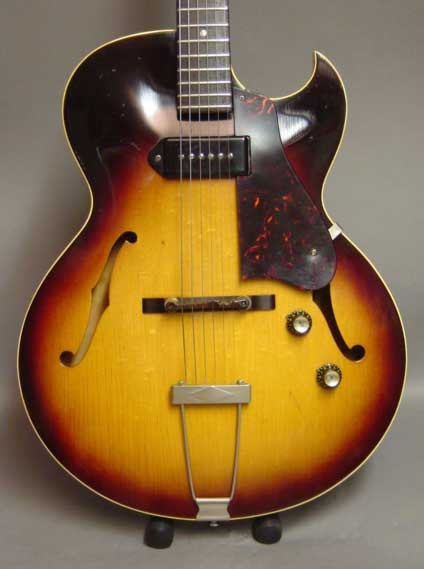

The Matsumoku factory had been producing guitars for export for some time, but the 1820 bass (alongside a number of guitar models and the 5120 electric acoustic bass) were the first Epiphone models to be made there. The pickup was a single coil P90, with black bakelite 'dog ear' cover.īy the end of the 1960s, a decision had been made to move Epiphone guitar production from the USA (at the Kalamazoo plant where Gibson guitars were made), to Matsumoto in Japan, creating a line of guitars and basses significantly less expensive than the USA-built models (actually less than half the price). Likewise it had a free-floating rosewood bridge, though with a simpler trapeze style tailpiece. The body profile resembled that of the ES-175: 16 1/4" x 20 1/4" with the sharp Florentine cutaway. The ES-125TC and TDC guitars were both 1 3/4" thin, and completely hollow there was no maple center block, as was the case with some other thinlines of the time, such as the ES-335TD.

All instruments were built at Gibsons Kalamazoo plant, in Michigan, USA.
#GIBSON ES 125 TC FULL#
Finally, in 1965, a cutaway was added to the full body ES-125, the ES-125C. C stands for cutaway, not Cherry which it denotes on some other Gibson instruments. Then in 1960, two single cutaway versions, with either one (the ES-125TC, as is the subject of this page) or two pickups (the ES-125TDC). I can’t explain it, but some guitars just speak to me on a gut level, and this is one of them.Gibson first produced the ES-125 in the 1940s, but in the 1950s and 1960s it morphed into numerous variants: firstly a thinline non-cutaway version, the ES-125T in 1956 (T stands for thinline), followed by the double pickup version ES-125TD the next year (D for double pickup). So is it a keeper? Most definitely-at least for now. I reserve that position for guitars that have a nice acoustic tone and are fun to play, so I can hear myself over the TV.
#GIBSON ES 125 TC TV#
The guitar has since become one of my go-to “TV guitars,” an axe I play acoustically while watching TV as part of my maintenance/rehearsing program. Plugged in, the P-90-style pickups sound fat and strong, but with enough high end to give your sound some snap. But honestly, the guitar is such a pleasure to play that I just overlook stuff like that. The action was nice and low, and I’ve never had to adjust it-it’s perfect! It does have one high fret that frets out when I bend the 1st string at the 10th fret, which I may deal with down the road. After the first three notes I was in love. It had no case but was very well packed by the seller, who turned out to be a music store. But remember: Once you’ve submitted an eBay offer and the seller has accepted it, you’re committed to buying. The action was nice and low, and I’ve never had to adjust it-it’s perfect!īut sellers usually entertain best offers because they’re unsure of their asking price. What have you got to lose? The worst that can happen is they say no.Īfter the first three notes I was in love. But to my surprise, they accepted my offer within two hours.īottom Feeder Tip #284: Whenever you see a price with OBO (“or best offer”), go ahead and send a lower offer, but not so low as to risk making the seller angry. I was going to give them a few days to reply before just paying their original asking price, which I still considered a bargain. But the auction also included the words “or best offer.” Well, alrighty now-my kind of auction!īeing the cheapskate I am, I immediately sent an offer of $145.
#GIBSON ES 125 TC PLUS#
It had a buy-it-now price of $170 plus $20 shipping, which I thought was a good deal.


It sported two P-90 pickups, a Tune-o-matic-style bridge, and a thinline body with a Florentine cutaway. I saw this cool Jay Turser 125 copy on the ’Bay, and the youthful memories started flooding back. But oddly enough, I’ve never bought one over the years. I used to go to our local music store and salivate over the one in their window. In my youth I always wanted a Gibson ES-125TDC.


 0 kommentar(er)
0 kommentar(er)
